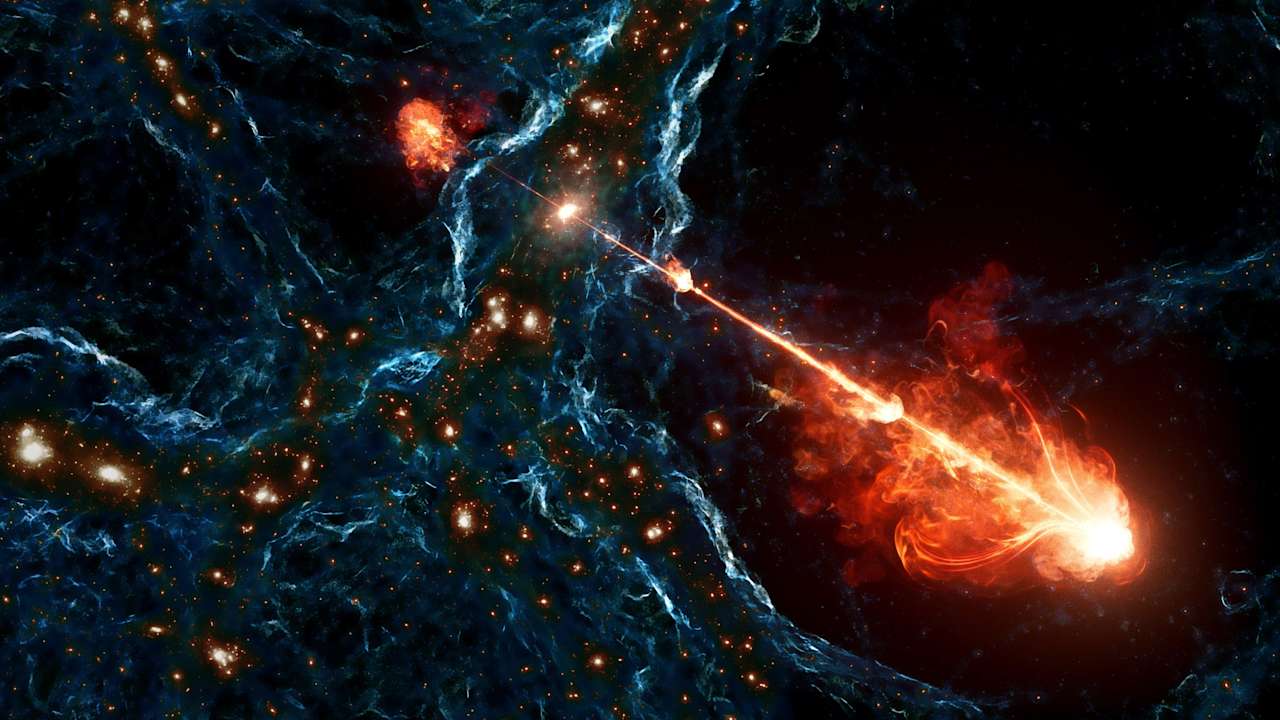Astronomers say they have discovered the longest pair of black hole jets ever seen.
Named Porphyrion, after a giant in Greek mythology, these outflows – which shoot out from above and below a supermassive black hole – formed when the universe was a mere 6.3 billion years old, less than half its present age of nearly 14 billion years.
The eruptions span 23 million light years from end to end – the equivalent of lining up 140 Milky Way galaxies back to back.
Although these are the largest jets from a black hole reported to date, scientists said jumbo jet systems may not be as rare as previously thought, with more than 10,000 megastructures discovered to date.
“When we first found the giant jets, we were quite surprised,” Dr Martijn Oei, a researcher at the California Institute of Technology in the US, said.
“We had no idea that there were this many.”
The fierce jets, which originate around 7.5 billion light years away, have a combined power output equivalent to trillions of suns, the researchers said.
The previous largest confirmed jet system was Alcyoneus, also named after a giant in Greek mythology, which spans the equivalent of around 100 Milky Ways.
Porphyrion and other massive jets were found using Europe’s LOFAR (LOw Frequency ARray) radio telescopes which are located across seven countries in Europe, with the main antenna network in the Netherlands.

“If you think of these jets as blasting their way out through all of this material that is around them, then the more powerful the jet is, the faster they expand.”
The team used machine-learning tools to scan the images for signs of these jets, with extra help from citizen scientists around the globe. But they believe there may be a lot more colossal jets left to be found.
“Our LOFAR survey only covered 15% of the sky,” Dr Oei said.
“Most of these giant jets are likely difficult to spot, so we believe there are many more of these behemoths out there.”
The researchers said it is not clear why the jets are so long but Martin Hardcastle, professor of astrophysics at the University of Hertfordshire, said it could be because the accretion – the process by which black holes consume surrounding material – would have been long and stable, allowing the jets to point in the same direction for billions of years.
Follow STV News on WhatsApp
Scan the QR code on your mobile device for all the latest news from around the country



























